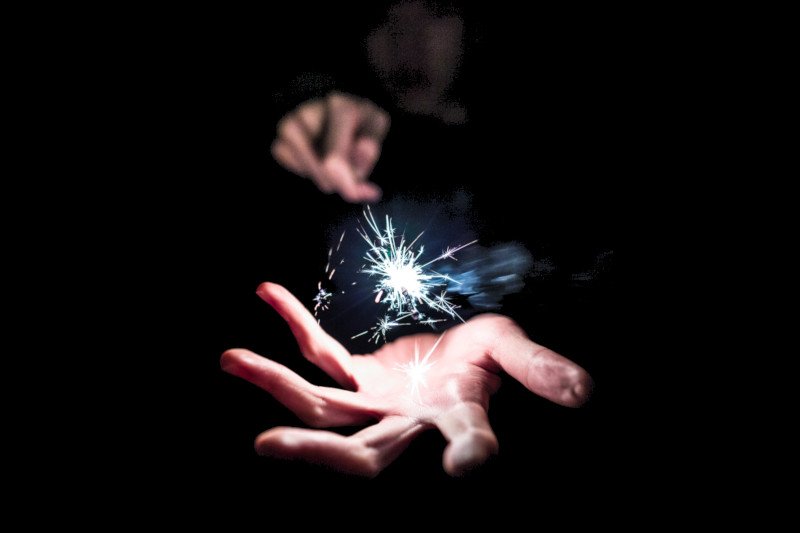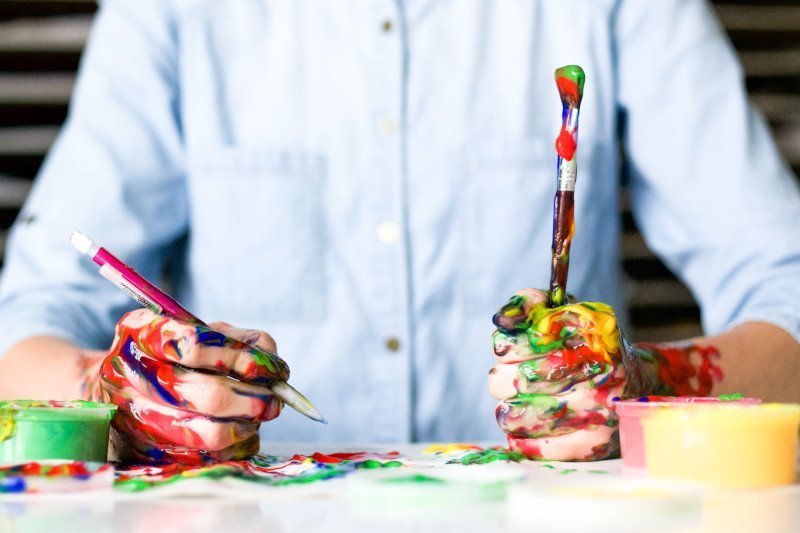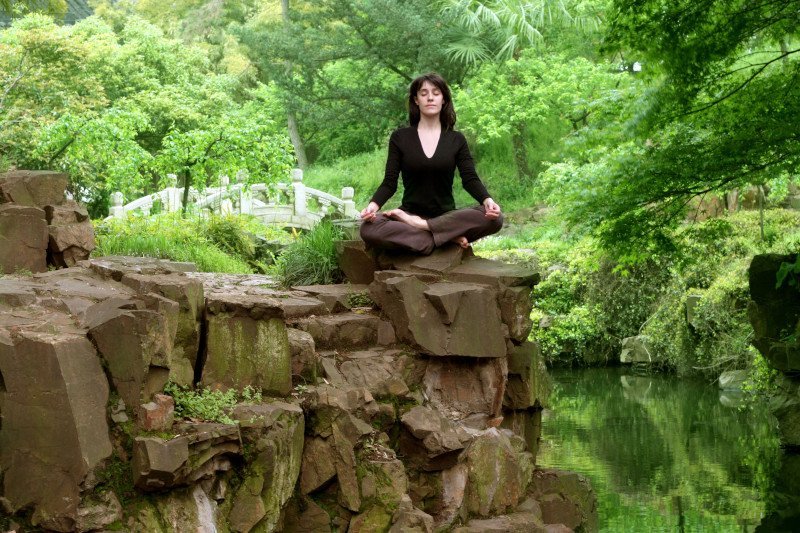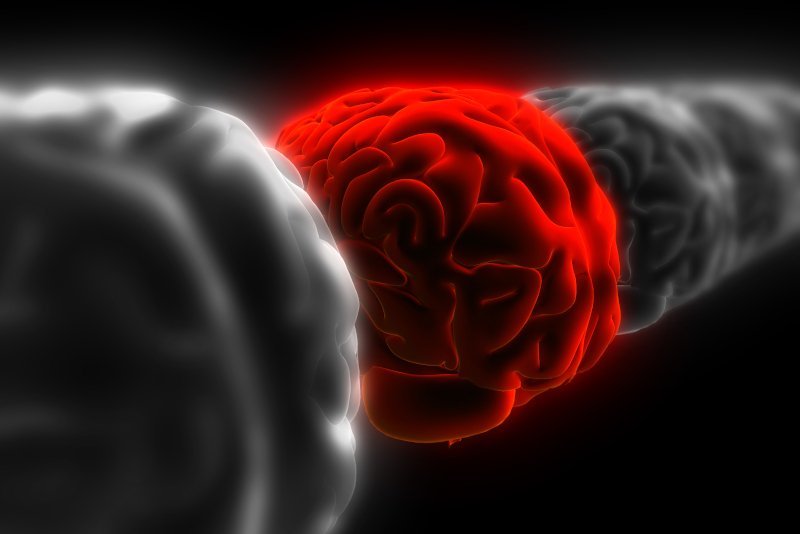How to Be More Creative and What Silence Has to Do With it

Creativity may well be the most precious asset of the human mind. Continual innovation is the decisive characteristic of our history. From the invention of stone tools some three million years ago to the World Wide Web, robotics, and artificial intelligence of our day and age, creativity is driving the accelerated change of our societies. Understanding how to be more creative is, therefore, a critical success factor in everybody’s life.
Conceiving of the Concept of Creativity Was a Creative Act
The ancient Greeks, commonly regarded as the cradle for Western civilization, did not have a concept of creativity yet. Plato for example instead thought of discovering things that are already in existence and as such ‘imitating’ them.

Creativity originated in Western culture as ‘divine inspiration’ through Christianity, and the enlightenment then later located the creative spark in the individual and not God.
One might be inclined to observe that in current consumer societies, the biggest of the creative industries, namely Marketing & Advertising, aims at compromising the individual’s creativity to follow mass consumption patterns.
Albeit this would require a much broader social analysis that shuns judgemental statements, we can propose that staying away from excessive sales-oriented communication leaves us with more space for intrinsically motivated actions. Moving into silence, at times, can be a good start for how to focus more and how to be more creative as a result.
Rather than trying (and failing) at recounting the whole picture of creative innovation, I’d like to focus on a few striking findings from scientific studies that support and suggest how you can effectively boost your creativity.
Creativity May Seem Like Magic, But Preparing To Be More Creative is No Wizardry
There is, however, a precursor to becoming creative that many people tend to overlook. They ignore it because it does not fit the cherished image of the creative genius that oscillates between the brink of insanity, hedonistic excesses, and phases of work mania to then randomly release awesome creations that leave the rest of us baffled.

British Writer Anthony Trollope
Now contrast this image with Anthony Trollope, the English novelist from the Victorian era who wrote masterpieces like ‘Barchester Towers’ and ‘The Way We Live Now.’ He would get up at five-thirty and write 2500 words by breakfast three hours later. How to achieve this? Have a cup of coffee, read the work of the previous day for thirty minutes to tune in, and then write rigorously for two and a half hours. Pace yourself with a clock on the table, aiming at 250 words every quarter-hour. Count the words to make sure and keep a meticulous diary of your progress and force yourself to hit the target. With a weekly plan of 10,000 words, Trollope even managed to hold a full-time position with the British Post Office.
Roy Baumeister calls Anthony Trollope a social scientist ahead of his time’ illustrating the impact of monitoring to support willpower.

William Shakespeare
But is this rigid self-quantification creative? Critiques were disconcerted by applying such a stringent system to a creative profession. But Trollope himself would later maintain in his autobiography ‘I have never fancied myself to be a man of genius, but had I been so I think I might well have subjected myself to these trammels. Nothing surely is so potent as a law that may not be disobeyed. It has the force of the water drop that hollows the stone. A small daily task, if it is really daily, will beat the labors of a spasmodic Hercules.’
What constitutes creativity? It is about making connections, combining seemingly separate and unrelated thoughts and ideas that blend into something new. The more we know, the more connections we can make. That is why creatives and innovators always have a broad footing in different areas of knowledge.
Think of William Shakespeare. Historians have established that young William went to a classical school where he studied classical literature and culture. He acquired in-depth knowledge of Greek and Latin which enabled him to read philosophers and writers like Seneca and Cicero in their natural language. How else would he have been able to conceive of Romeo and Juliet, the world-famous drama staged in Verona, Italy he never visited?

Leonardo da Vinci
While we are in Italy, think of Leonardo Da Vinci, the most creative genius in history. His life motto was ‘ostinato rigore’, ‘obstinate or persistent rigor’. Applying this inner determination at acquiring knowledge to up ones’ game will in time become the fertile soil that bears the fruits of creativity. ‘Genius is one percent inspiration and 99 percent perspiration’ Thomas Edison once famously claimed.
Malcolm Gladwell popularized the idea that anyone can become an expert of world-class mastery of anything after around 10,000 hours of dedicated practice in his 2008 book Outliers – The Story of Success. Having the time, opportunity and support of ones’ immediate environment to dedicate that much time is a different story. And, of course, the sooner you start, the better your chances.
While Gladwell’s Outliers centers around showing that the prominent idea of ‘self-made’ success is a myth, Anders Ericsson and Robert Pool focus in their book ‘Peak – Secrets from the New Science of Expertise’ on how to approach practicing a skill to become a top performer. Their research confirms that not innate talent but practice is the key to becoming exceptional. Talent is not a reliable predictor for overall performance, practice is. Practice ought to be diligent, purposeful, with set goals targeted at your current level of skill, and constant feedback. It is the plasticity of our brains that allows us to move beyond levels of proficiency that we deem impossible when starting out. The brain changes by creating new connections between neurons. This way learned expertise is hardwired and becomes physically manifest.
It is in the highest stage of expert performance that some people start making particular creative contributions that go beyond the existing knowledge in their field. Ericsson and Pool say state that ‘Creativity will always retain a certain mystery because, by definition, it generates things that have not yet been seen or experienced. But we do know that the sort of focus and effort that give rise to expertise also characterizes the work of those pioneers who move beyond where anyone has been before.’
Let’s assume you put in that effort to develop your expertise. Now let’s look at some ideas about how to tickle that creative genius in you.
Tactics How to be More Creative and Scientific Experiments that Support Them
As Scott Barry Kaufman and Carolyn Gregoire describe in ‘Wired to Create – Unraveling the Mysteries of the Creative Mind,’ creativity is a jumble of traits that you can boost with specific techniques.
Below are some recommendations and insights on how to be more creative. While they draw on multiple sources, you will find most of them in great detail in Kaufman’s and Gregoire’s groundbreaking research and in what currently must be one of the best books on the neuroscience of creativity: Mark Beeman’s, and John Kounios’ ‘The Eureka Factor: Aha Moments, Creative Insight, and the Brain‘.
Arouse Your Brain with Variety
The higher the variety of peoples’ regular activities, the higher their scores on tests of creative thinking:
In the Remote Associates Test (RAT), for example, participants need to come up with a word that links all words given in a question together. The additional word to complete the answer can correlate in many ways, like create a compound word or form a semantic association.
An easy RAT item is, for example, cottage /Swiss/cake. Did you guess it? Yes, the correct answer is ‘cheese.’
A challenging RAT item is wise /work/tower. Okay, don’t read on for a moment, instead, ponder. And voila, the correct answer is ‘clock.’ Indications are that you are genuinely creative if the second one was easy for you.

You have just tested your convergent creative thinking skills, i.e., your capability to determine a clear, correct solution to a problem. You can find many more Remote Associate Test Questions here.
J.P. Guilford designed the Alternative Uses Test in 1967. Today it is a popular measurement for divergent creative thinking skills: the aim is to generate as many different ideas for uses for a common object within a given time (usually four minutes), that are original, differ significantly from each other, and are elaborate.
The standard example is a brick, so let’s be creative (tongue in cheek) and take a tennis ball. What are all the alternative uses of a tennis ball? To play tennis (wow, off to a great start), to use as a squeeze ball, to juggle, to use an acupressure device under the back, to chase off monkeys, use as a meditation object, use as a rough paintbrush, cut open to protect a padlock, it’s a great doorstop, cut in half to keep change in the car, make hitch cover, cushion the blow of a hammer, use cut open to remove a broken lightbulb (….). You get the idea!
There is an intuitive understanding of why people that have a wide range of activities would score higher in these creativity tests. Psychologists speak of ‘psychological plasticity’ in creative people who continually desire to explore the new and unknown. The basis for this inclination is a virtuous cycle that starts with dopamine. The more new experiences we have, the more we nourish our imagination. The more imagination, the more new material there is or our brains to work with to form new creative ideas.
As creatures of habit, we develop ‘functional fixedness’ as we age, which is the tendency to perceive objects in a single, set way. The Alternative Uses Test can teach us instead to maintain the habit of remaining open to new experiences and different ways of doing things. Highly creative people are good at staying open, to interrupt their patterns of thought and behavior over and over again.
Be More Creative by Avoiding Pre-Crastination and Incubating Your Thoughts
Most of us think of procrastination as a problem and a challenge. It is the tendency to start important tasks prematurely for the sake to get over and done with it, also known as ‘pre-crastination’, that lowers our creativity. Studies have shown that procrastinators often come up with more creative solutions. More thinking generally equals more creativity. So give yourself some time to think before the task. More considering at the beginning equals better execution in the end.
This, of course, depends on the circumstances of your work. When working on a complex task, step away and take some time to think, ‘incubate’ your thoughts. Neuroscientists surmise that even during the time you don’t directly think about the task at hand, neuronal circuits concerned in the solution of the problem remain active, continuing the search.
Incubation studies have shown this effect quite clearly: Researchers asked participants to think about a different problem for some time and then came back to the prior task at hand. These participants overall performed better than the control group who stayed on the same task for the whole duration. Despite being given the same amount of time to work on the problem.

How to be even more creative is to include sleep and dreaming in your incubation. Sleep research indicates that our brains enter the rapid eye movement (REM) phase of sleep, which is associated with dreaming, several times every night. While in a REM sleep phase, our brain consolidates experiences of the prior day into long-term memory by finding seemingly abstract associations between different pieces of information.
Paul McCartney once said that the melody of the song ‘Yesterday’ simply happened to be in his head one day upon waking up. And Dr. James Watson dreamed of two intertwined serpents with heads at opposite ends (mind you, there is also the version in which he dreamed of staircases, but the snakes sound more dramatic) that made him consider the double helix structure of DNA.
Daydream and Use Your Intuitive Thinking to Be More Creative
Many scientists presuppose two main types of thinking, which is the dual-process theory of cognition. Those two types or systems of thinking go by many names: The most common is probably unconscious reasoning versus conscious reasoning. Nobel Laureate Daniel Kahneman simply called the two types intuition and reasoning. And Jonathan Haidt uses in his seminal work ‘The Happiness Hypothesis‘ the vivid image of our divided mind as a rational rider sitting on a wild elephant.
Traditionally the two thinking systems were assumed to work separately, but research by Scott Barry Kaufman in 2009 has confirmed that the challenge is to apply both types of thinking adequately for the best possible problems solving capacity.
Kaufman refers to Singer who coined the term positive-constructive daydreaming (opposed to poor attention and anxious or obsessive fantasies) and calls daydreaming a key part of the creative toolkit. Daydreaming can help discover hidden thoughts and feelings by providing access to the unconscious mind.
The famous Swiss psychoanalyst Carl Jung applied a similar technique to deal with emotional challenges which he called active imagination. This method gives thoughts or the object of active imagination a voice of otherwise undiscovered parts of the personality. The resulting self-expression helps to comprehend the unconscious contents of the mind.
Jung claimed that this line of communication with the unconscious would help him to gain a fresh perspective and new ideas about how to solve the issue at hand. Active imagination has since then come a long way as a creativity technique with applications in the arts and business alike.
Move into the Present Moment
We live in the age of distraction. The average smartphone user looks about ten times per hour at her device. The average American spends almost half her day, eleven hours, with a digital device.
How to focus has always been a challenge for human beings. That is why techniques to hone the ability to concentrate are a hallmark of every spiritual tradition.
Modern communication technology and social media have taken the game to a whole new level. Now we use time-tracking and productivity apps to discipline our excessive and often detrimental digital communication behavior.
Just log out and do some doodling instead? Good start. Why is the shower such a great place to relax and have new ideas? Because the water quite literally engulfs us in its flow and hides distractions. So our ideas can bubble along with that gel.
All the same, the most effective way to focus, in a distracted world or otherwise, is meditation.

According to a 2015 study in Frontiers in Psychology, meditation boosts creative thinking. Meditation comes in many flavors: from sitting quietly for a few minutes observing the breath to a lifelong practice in remote silence. The good news is that even a few minutes of quiet sitting encourage fresh thinking. The key is mindfulness. Infusing the moment with mindfulness is like looking at what is with magnifying glasses and having a complete experience of our activity of observing.
To understand why we are more relaxed and creative we need to look at the brain. Our grey matter operates at five different brainwave frequencies corresponding with different states of being.
We measure brainwave frequencies in hertz or cycles per second and go by the names delta, theta, alpha, beta, and gamma.
They range from 0.1 to 4 hertz for delta in deep, dreamless sleep, when our bodies grow and regenerate. 4 – 7 for theta in deep relaxation, or just after waking up. 8 to 12 hertz for the alpha frequency when our state is relaxed, calm, and lucid.
The beta frequency is alert consciousness and ranges from 12 to 35 hertz. Our brain is in beta when we get some work done, but also when we are agitated or even frantic. Gamma is at above 35 hertz and happens when different brain regions fire in synchronization and you have this ‘click-moment’. Gamma is associated with peak performance and flow.
Most people are stuck in beta. Hence the never-ceasing experience of stress and oftentimes detrimental self-talk. When we are doing nothing, the brain, in fact, still maintains a lot of action and is not relaxing. In neuroscience, this is known as the activity of the brain’s default mode network (DMN).
Meditation happens at the alpha brainwave frequency. Meditation also quietens the brain’s activity when we are doing nothing as a result of prevailing alpha waves. Consequently, the mind wanders less and can focus better at the same time. A mind in focus is a more happy mind. Growth in meditation is becoming increasingly alert and more relaxed at the same time. As more alpha waves also equal more happiness, this brings us the next recommendation.

To learn more about the effects of meditation I recommend ‘Altered Traits – Science Reveals How Meditation Changes Your Mind, Brain, and Body‘ by Daniel Goleman and Richard Davidson.
Listen to Happy Music, Take a Walk or Why not Do Some Gardening?
Gene Rowe and his colleagues showed that the randomly induced mood of participants had a significant effect on how well they did in the Remote Associates Test (RAT) and the Alternative Uses Test:
Participants who had listened to a jazz version of Bach’s Brandenburg Concertos (just in case: this induces a positive mood; though I am not entirely certain what happens if death metal is your thing) performed better in these tests than the participants had listened to Prokofiev’s Alexander Nevsky (not so positive mood, aka as sad or negative). Listening to positive music boost creativity, Gene Row and his team concluded.

The mood-induced participants then also did the Eriksen flanker task: participants have to respond as quickly as possible to the appearance of a letter in the middle of a computer screen while ignoring the flanker letters. In cognitive psychology, the Eriksen flanker task tests the ability to focus and suppress inadequate responses in a particular context.
Listening to happy music made participants score worse at this task. And listening to sad music enhance performance on the other hand. Why? The researchers explain that a positive frame of mind broadens ones’ focus of attention and makes the brain more susceptible to a wider range of diverse information.
Take a Walk. You Will be in the Good Company of a Whole Creative Lineage.
Okay, listening to happy music can be a good and simple way how to be more creative. Likewise, some of history’s greatest thinkers insisted that walking was an integral part of their creative process.
‘Solvitur ambulando’ were to words Greek philosopher Diogenes spoke to prove the law of motion: ‘It is solved by walking’. The German philosopher Nietzsche Nietzsche perhaps went the furthest in his praise for walking as saying that ‘all truly great thoughts are conceived by walking.’
Also, Henry David Thoreau established a relationship between the most original of all human forms to exercise and mental processes: ‘Methinks that the moment my legs begin to move, my thoughts begin to flow.’
Some of the many other thinkers that held their walking practice in high esteem as to make it part of their literary musings were Aristotle, Kant, Jefferson, Beethoven, Darwin, Dickens, and Freud.
Just like listening to happy music walking is conducive to boosting happiness as well as creativity. Walking can also just be a break or a small incubation period to generate thoughts or even a means to achieve solitude.
Scientific studies have shown that walking can solve creative problems. Walking leads to lower frustration and stress, the engagement of the whole body causes activation, and the overall enhanced mood can help us with creative thinking as a result.
One such study by Marily Oppezzo and Daniel L. Schwartz conveniently reveals findings in the research paper’s title: Give Your Ideas Some Legs: The Positive Effect of Walking on Creative Thinking.
Oppezzo and Schwartz had participants complete the remote associates’ test and the alternative uses test under various conditions: Some of them sat in a chair, others stood, some walked inside or outside, while others were pushed around in a wheelchair. Yes, the title proved adequate – walking participants appeared to be operating at significantly boosted creativity levels than other study participants.
Walking in nature is particularly effective due to our brain’s instinctively positive association with the color green. This is why the next recommendation has magic that appeals to us as a species.
Touch Earth. Sow Seeds. Gaze Flowers. Do Some Gardening for Your Creativity.
Gardening combines the positive aspects of taking a break, incubation, daydreaming, taking a walk and adds the fascination of looking at green.
There is an increasing body of evidence that the color green enhances our problem-solving faculties and fosters creative thinking. Our brains associate green with life, renewal, and growth, which triggers innovation.

In experiments, participants performed better at creative tasks if they were presented in a green rather than a white or red folder. So it appears a couple of seconds is all it takes to lighten that creative spark. Now imagine what gardening does to your brain and your thoughts.
In an environmental context, green reduces anxiety and fatigue, as well as contributing to the right frame of mind for creative tasks.
Looking at parks in cities the world over illustrates how gardening and landscaping are important cultural artifacts.
Gardening can be a perfect creativity-inducing break. It is engaging and appeals to all your senses, but it is at the same time not too engrossing as not to leave any room for an open mind. And we often do gardening in solitude, which leads us to our final recommendation.
Embrace Solitude and Open Up to Silence
‘Moving into silence – a simple thing that is hard to do’ is the title of another article on the Quietness Me website. Creative people are often very good at embracing solitude and opening up to silence for obvious reasons:
Spending extended periods of time alone creates the space to concentrate on ones’ passion. How otherwise would you get anything done?

A quote by Warren Buffet very precisely summarizes this screamingly obvious yet often ignored fact – ‘The difference between successful people and really successful people is those really successful people say no to almost everything.’
Saying no to others, creating that space to produce and feeling well about oneself doing so is at the heart of Charlie Chaplin’s poem ‘As I began to love myself I freed myself of anything that is no good for my health – food, people, things, situations, and everything that drew me down and away from myself. At first, I called this attitude a healthy egoism. Today I know it is ‘Love of Oneself”.
Developing a focus of concentration on the task in front of us requires an overall focus on what we are trying to create. In a business book, there would be a talk of goal orientation. This includes avoiding distractions as much as possible as Buffet and Chaplin so aptly expressed.
In solitude, we can discover our inner voice, which is the core virtue of any creative undertaking. It is also the magic of the creative process when the masterpiece manifests itself from the depths of our mind as if it was instead coming through us than from us.
So How to Be More Creative – Where to Start?
Having a variety of activities, incubating thoughts, daydreaming, moving into the present moment, listening to happy music, taking a walk, gardening, embracing solitude, and silence. All these activities can help to spark innovative thinking.
We started this little expedition into creativity and how to attain it by making the point that the flamboyant creative genius is a cherished image but not the real deal as hard work comes first. This still holds, but wait.

What about excentric creatives like Klaus Kinski who legendarily ranted at audiences and drove his director Werner Herzog sufficiently crazy that he tried to kill Kinski? What about filmmaker R. W. Fassbinder and his aggressively non-conformist lifestyle, workaholism, and drug excesses he eventually died from?
Many Creatives Have Struggled With a Balanced Life
What about the long list of highly-gifted creatives who struggled to find their place in life to tragically perish by their own doing at a young age? Kurt Cobain, Jimi Hendrix, Janis Joplin, Heath Ledger, Jim Morrison, Egon Schiele, Amy Winehouse, Ilya Zhitomirskiy to name just a few.
‘Messy Minds’ is the introduction to Kaufman’s and Gregoire ‘Wired to Create.’ Yes, creative minds are messy. Creative minds challenge, polarize, enrage, frustrate, and amaze. And while this is not based on research but personal ruminations, it appears to me that creative minds require substantial personality work and an active and ongoing effort trying to keep it together.
Just like Arjuna cannot fathom or endure cosmic vision that Krishna momentarily bestows unto him in the Bhagavad Gita, the creative mind struggles with mediating the grandiosity of the idea into the social reality of this world.
Friedrich Nietzsche lets Zarathustra say ‘I tell you: one must still have chaos in oneself to give birth to a dancing star.’
How does the dancing star make it from the inner intuition into the social world? Discipline, hard work, perseverance.
And a whole lot of silence, so creativity has space to unfold and the mind can remain in balance.







